Summary
| Goal: Get the most out of Production phase. Prototype and playtest as quick and effective as we can. Challenge: We only have 2 weeks left before Softs opening of our project. How to ensure everything works as planned? Did we fulfill this week’s goals: Yes! |
Process
We went through 2 weeks cycle of production, with at least 1 external playtest a week. We filled our Scrum board with tasks for everyone. The red notes were coordinated with tasks for the iPad, and blue were tasks for the big screens. The rest were additional tasks that were left off from pre-production.
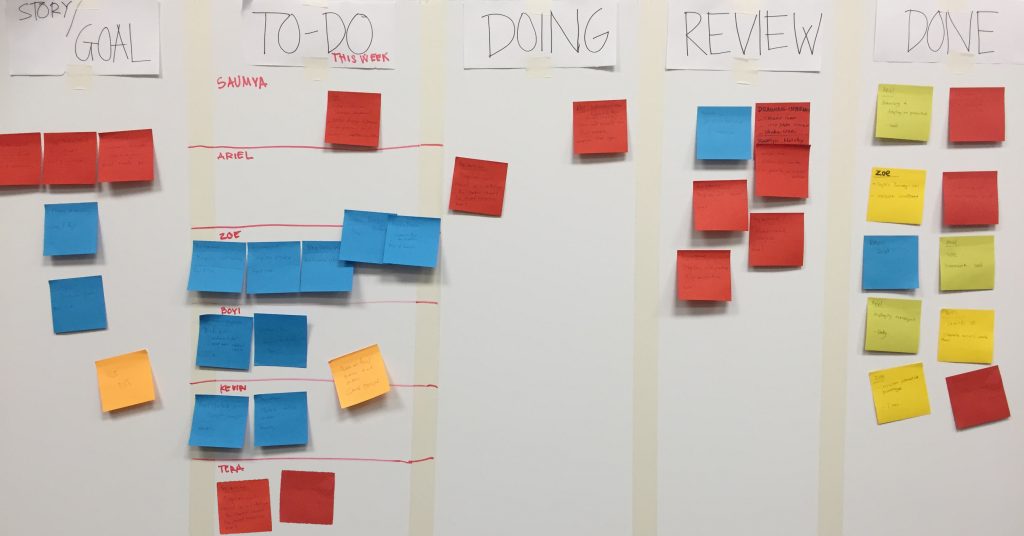
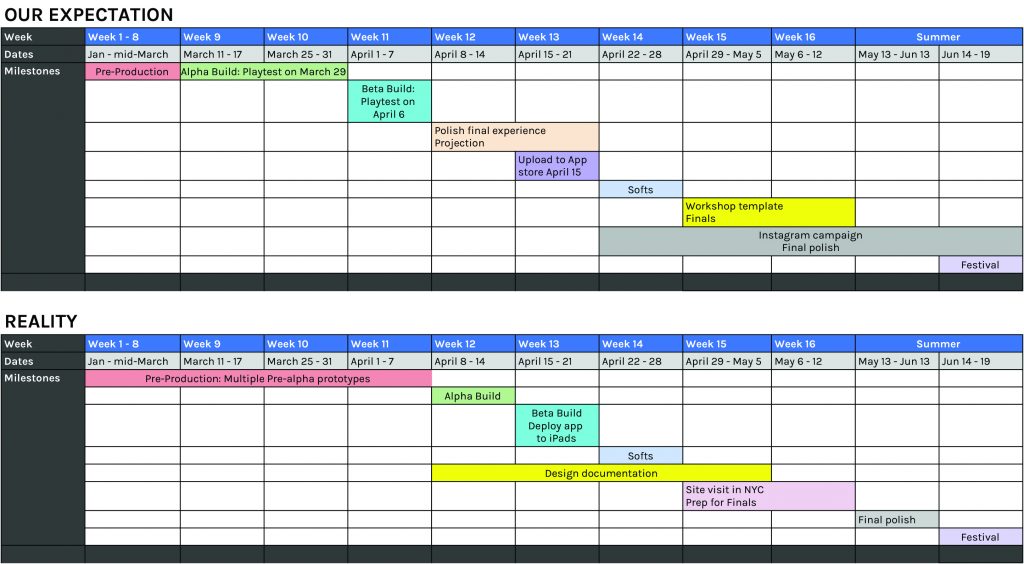
Inspiration on guerrilla art tactics
Zoe found this book and we immediately ordered it from Amazon to be used as an inspiration for our audience’s creative toolkit. The book was informative, edgy, and it gave us a great validation (or to be exact, an evidence of research) for all the design features that we came up with.
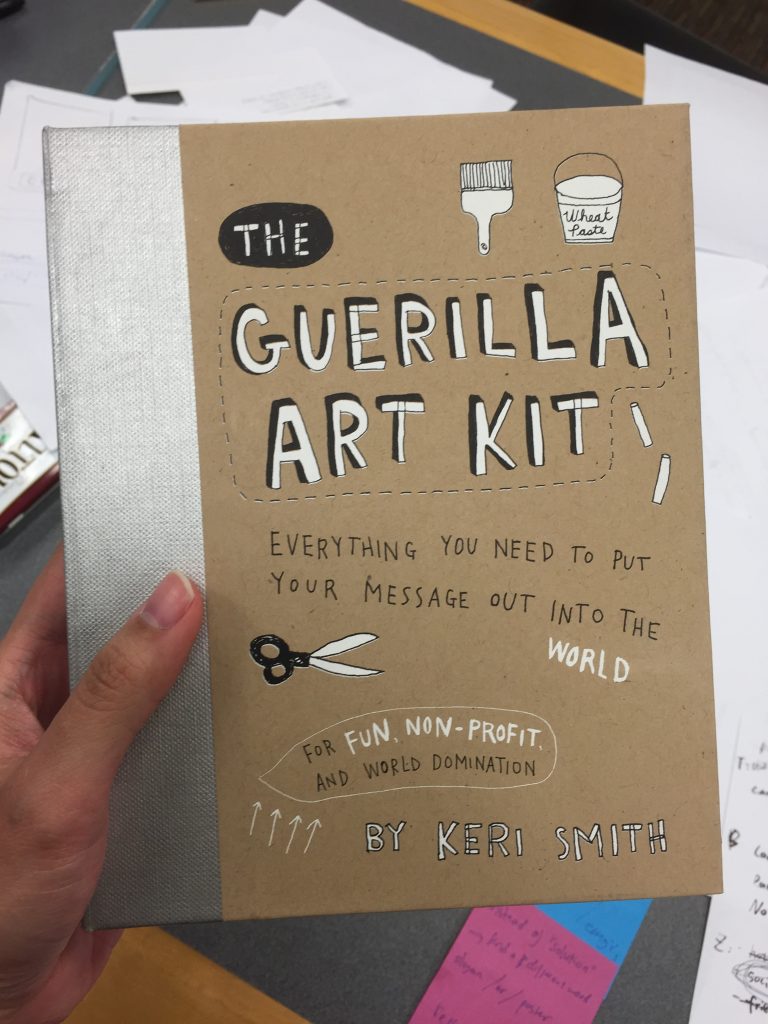
Rocky coordination between designers and programmers
Boyi drafted out the overall flow of our experience and designed the iPad screens with Saumya. Because we only had 2 weeks of production and a lot of components to build and test, it was overwhelming for the team, especially our programmers to keep track of all the design details. I printed out Boyi’s user interface to help the team visualize and implement our design. Quickly displaying things on the whiteboard helped us see our work with clarity and flexibility while keeping everyone’s vision (internal and external) aligned.
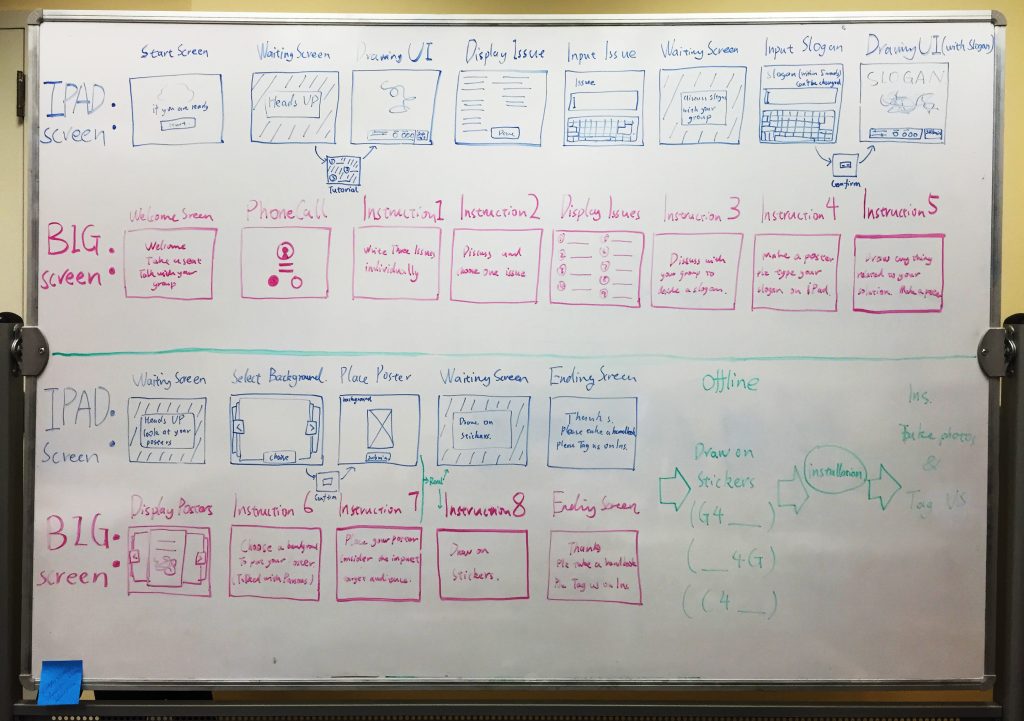
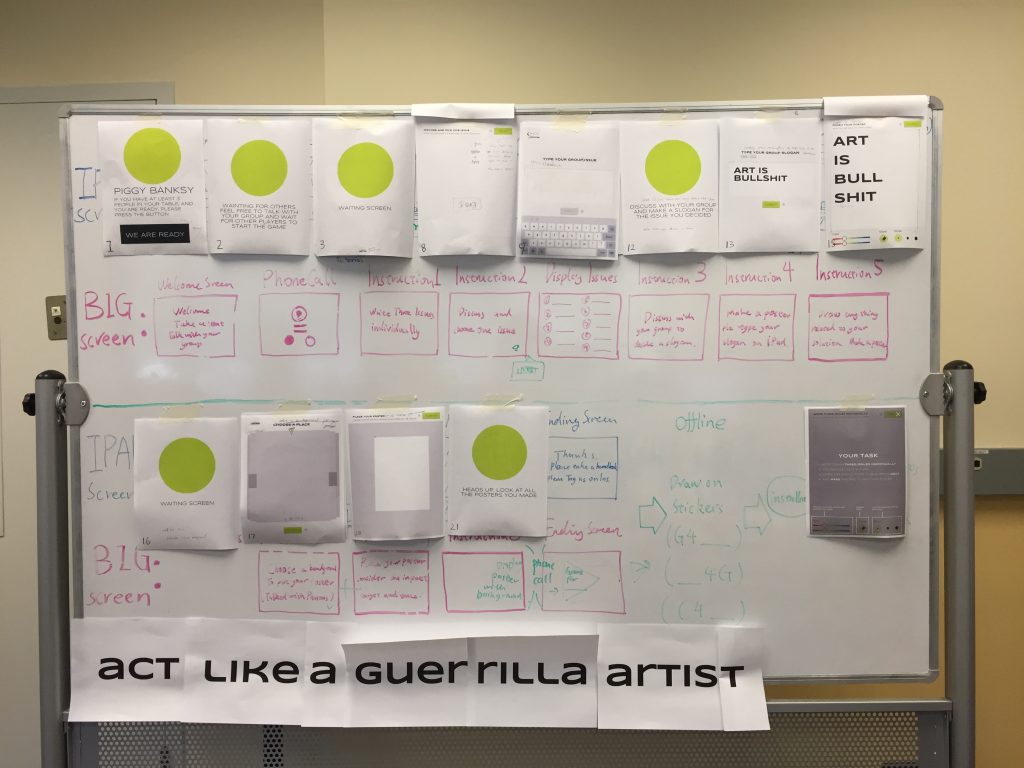
Zoe created our overall UI aesthetic and worked with Ariel on our big screens’ website. The important things we considered for our big screens included:
- Clear instructions / activity prompts;
- Facilitator’s way of controlling the activity rounds and seeing number of tables submitting their work;
- Smooth coordination between the facilitator with the transition of the screens, revealing issues and posters;
- Creative ways to inspire the audience to be artsy and provocative.
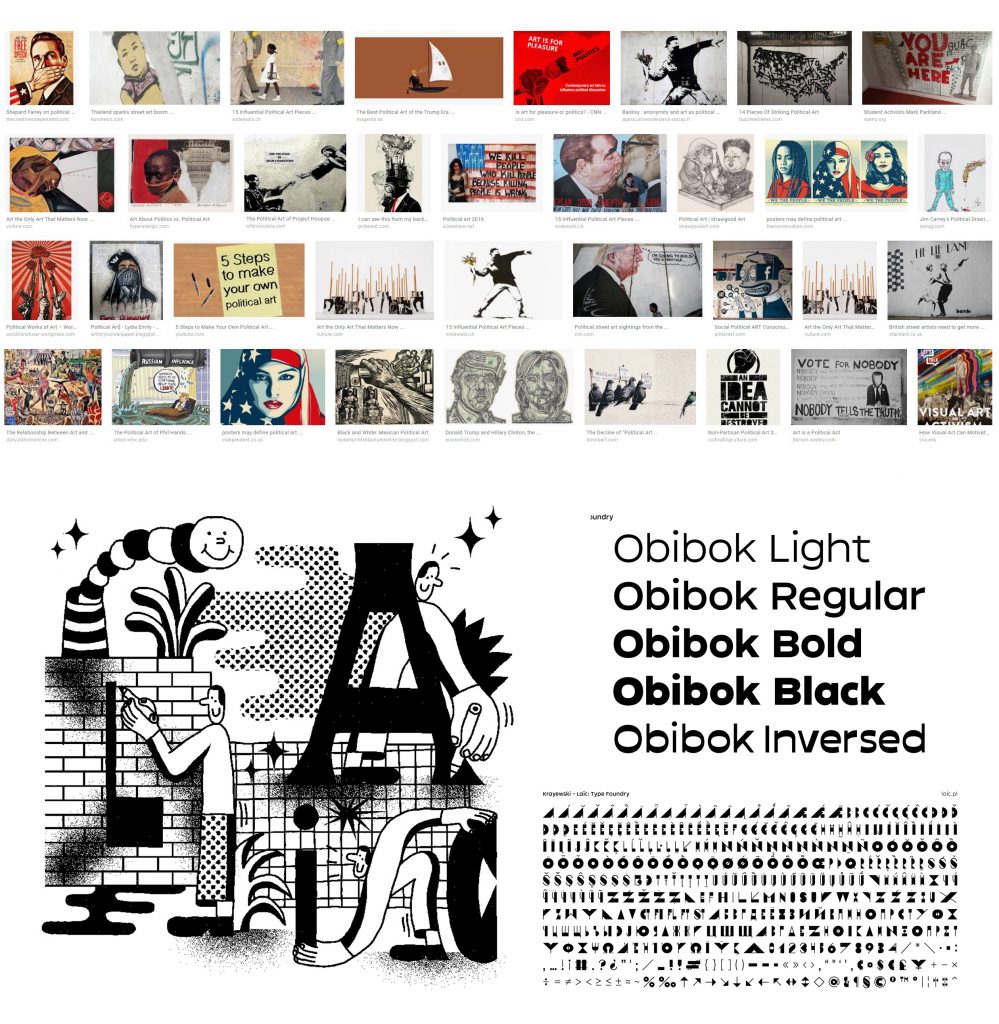
Mismatch narrative design needs with available skillsets
Narrative design was something our team had struggled with since the beginning of the project. We knew that it was important to set the tone for the discussions; we did not know to what degree should it be invested in. Although we were excited with the framing that a narrative structure would empower our experience, none of us was a fictional writer. There are 2 parts of writing that are involved in this project:
- Fictional writing that sets up the exposition for our experience and builds an emotional connection with the audience, and
- Activity prompts that are personalized and encourage the audience to discuss and share their message.
Both parts were difficult to write. Kevin took on the responsibility and had been working non-stop on multiple scripts and activity prompts. However, it was challenging for the rest of the team (non-Americans) to evaluate. I invited the faculty and writer-friends to give us feedback, and although they had been helpful, we still did not arrive at something solid. Frustrating!
I took a step back, once again, and dissected the evolution of our fictional artist.
The only thing we knew that explains this fictional artist’s existence was because our phone call feature was engaging to the audience.
This means, we needed a fictional character.
- What is the artist’s name and character? Is he/she cute, satirical, serious, or a combination of them? If combination, when does he/she (and the experience) transit from one state to another?
- How can this artist set the tone and feel for the experience?
We did not know how to make our arguments for any of the above, so we could not evaluate Piggy Banksy and his script. Where can we find our reasons?
Transformational Framework vs. Experience design
Reflecting on our progress, I realized that although we nailed down our transformational goals in week 11, we did not openly discuss our experience design pillars for the team to see eye-to-eye. Our design interactions are directly mapped to transformational goals, but one important piece we missed to discuss was how they are tied to creating a great live experience for 100 people. When it comes to experience design, interest curve is important. Piggy was a nice, fun touch because we wanted the audience to learn something new in a light-hearted way after spending hours in serious talks at the Festival. Meanwhile, guerrilla artists are serious about making a statement, so we needed our experience to deliver that bold, call-to-action tone as well. What part of this is of Transformational Framework and what part is of experience design? *birds chirping
Another thing is, a great experience design is about personalization. This means, how to tie the concept of art and civic engagement to our audience, and let the experience BE about them. This is where the activity prompts come in that enable the audience to share their personal story and learn about others. Is this part of Transformational Framework or experience design? *birds chirping
I’d say, there are many overlaps between the Transformational Framework and how to design an experience. The challenges are when to analyze them individually, when and how to intersect them. Regardless, all of our features were definitely designed with the intention to answer all of these requirements.
Experience design pillars
I went ahead and created our experience design pillars (or you can say, success metrics) with Boyi because there were still small debates on our interactions that we did not know how to make arguments for. We both agreed that the Transformational Framework and experience design pillars should be progressed simultaneously when your project is about creating a live experience that can transform others.
Sharing & Learning:
- Players are given the opportunities to speak up about their personal story
- Players are given the opportunities to build connections with other people within their table and within the theater. (through discussing, drawing together, and seeing the collective results on the big screens)
Being a guerrilla / social practice artist:
- Players are given the tools and inspirations to creatively share their message to other players inside the theater. (drawing interface, slogan, poster, projection, sticker, workshop format)
- Players are encouraged to not be silent, confront their fear of being judged about the issues they care for, and collaboratively use guerrilla artists’ tactics to get others to see their message (think like a guerrilla artist, visually create a message through poster, distribute content through sticker)
Connection to reality:
- Players are given the opportunities to learn that games can truly make an impact in real life if done the right way. (put your poster at real places)
- Players are given the opportunities to connect with other participants of the experience after the experience ends. (stickers)
Having fun:
- Players are given the opportunities to relax and have fun after attending G4C serious talks the whole day. (Piggy Banksy’s character, collab drawing, and sharing)
Note to self: When designers were struggling to make progress, take a step back from design and revisit the project’s overall goals. Was there a bible that we can rely on to make decisions? If not, create it!